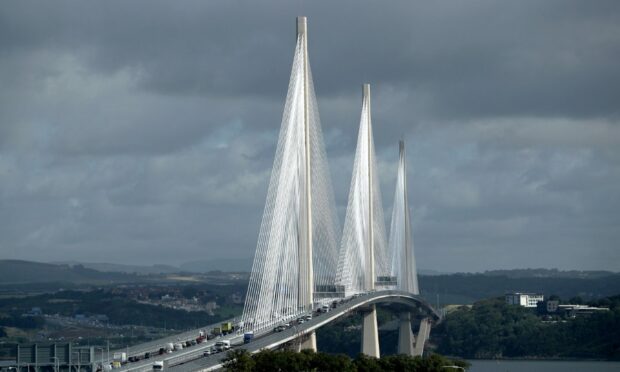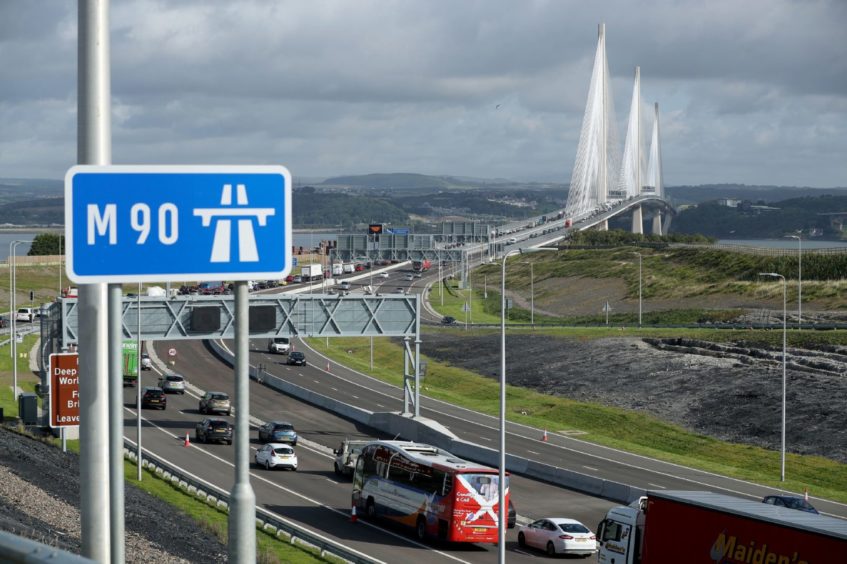Drivers on the Queensferry Crossing face a reduced speed limit for up to six weeks – while workers give cables on the bridge a clean.
The operation – which gets under way on Monday August 30 – is part of efforts to ensure the bridge does not have to close due to falling ice.
Experts believe that cleaning the cables with soap and water will reduce the likelihood of ice building up.
40mph speed limit on bridge
The structure has had to close several times since 2017 due to ice falling from the cables and towers.
Teams of technicians will abseil from the top of the 207-metre concrete tower and wash down the sheaths that encase the steel strands.
The 40mph speed limit will be in force during the work from Monday to Friday, between 7am and 6pm, for five or six weeks.
Chris Tracey, Bear Scotland’s unit bridges manager for the south-east, said: “Since the Queensferry Crossing opened to traffic, dust and dirt has accumulated on the cables.
“These tiny particles may be helping ice to accrete as crystals form around them.
“The first cables were installed in 2015 and there are no records of any ice forming on them until 2019.
“By cleaning the cables on one tower we will be able to measure the impact this has.
“As part of the project, thermal cameras are being installed at the top of each tower to monitor and measure any formation of ice.
‘Essential safety measure’
“On this occasion the cleaning will be carried out by rope access technicians, however work is also progressing on the design of a machine to carry out this task in future, should the trial prove successful.
“We appreciate that some drivers may find the reduced speed limit during the works frustrating, however this is an essential safety measure and will only be implemented when necessary.”
Tests are also being carried out on methods of preventing the build-up of ice at a specialist centre in France.
Mr Tracey added: “We’ve already installed a range of sensors to measure the conditions in which ice forms, and these trials will further improve our understanding of the process.
“The ultimate aim is to design measures to mitigate or prevent the problem.”

